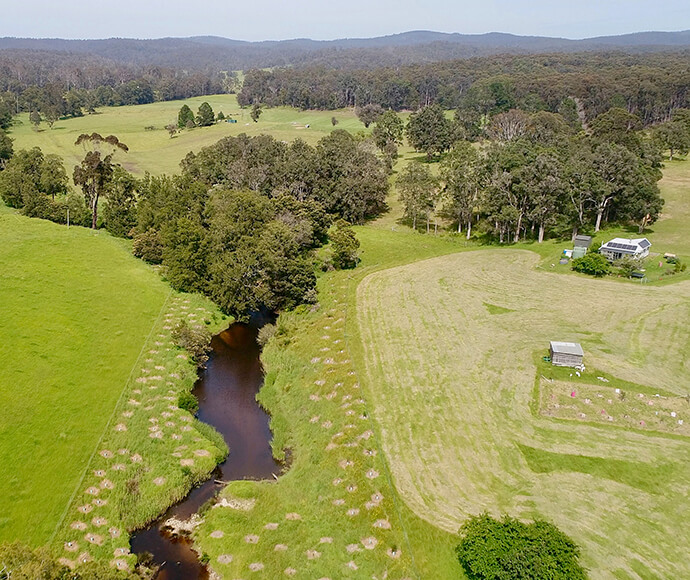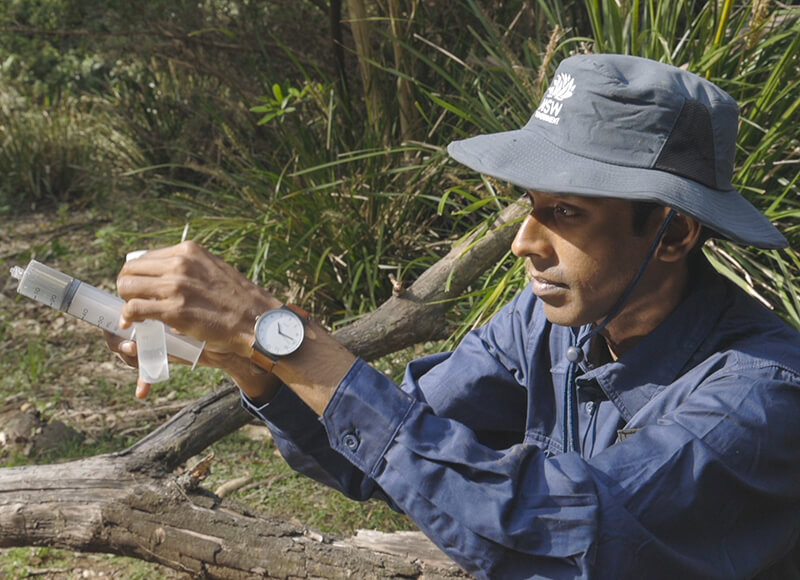In recent years ecological health scores for water quality at Wapengo and Middle lagoons have varied. Vegetation clearing and livestock access to the waterways drive poor water quality.
Rehabilitation activities have been undertaken since 2019. This work aims to maintain and improve water quality as well as produce a range of other social, economic and environmental benefits.
We monitor the ecosystem health of the lakes and surrounding creeks before and after these rehabilitation activities to determine the benefits the rehabilitation work has produced for the two waterways.
These projects are funded by the Marine Estate Management Strategy.
Community members help restore lagoon
To learn more, watch this video about efforts to improve water quality at Wapengo Lagoon.
Expected project outcomes
Rehabilitation projects are coordinated by South East Local Land Services and involve landowners and Bega Valley Shire Council. The projects include:
- installing fencing to prevent cattle from entering the waterways
- provision of off-stream watering points or troughs for livestock
- replanting riparian vegetation, the trees and shrubs that line the edges of waterways, with appropriate native species
- bank stabilisation works
- road sealing near Wapengo Lagoon.
Over time we expect:
- increased riparian vegetation will stabilise creek banks and reduce erosion
- a reduction in nutrients and bacteria washing into the creeks and lakes
- increased habitat for land-based and aquatic native plants and animals
- increased diversity of native species, including in the water.
The improvements to the ecosystem will benefit landowners and primary producers by providing:
- cleaner water producing healthier livestock
- improved pasture drainage providing higher quality stock feed
- reduced risk of bacteria affecting oysters for human consumption.
Improvements in land condition may increase land value. Landowners may also gain a greater sense of wellbeing from their contribution to nature conservation.
South East Local Land Services are encouraging people to learn more about the projects and get involved. The more people who undertake improvement works on their land adjacent to the creeks and lakes, the greater the results will be.
Scientific monitoring
Long-term monitoring is important after management actions such as riparian replanting and stock exclusion fencing are undertaken. It may take many years for improvements in ecological health to become evident.
We have assessed several key environmental indicators at sites along creeks in the Wapengo and Middle lagoon catchments prior to rehabilitation activities to determine baseline ecosystem health. We are continuing these measurements to determine how rehabilitation improves ecosystem health into the future.


